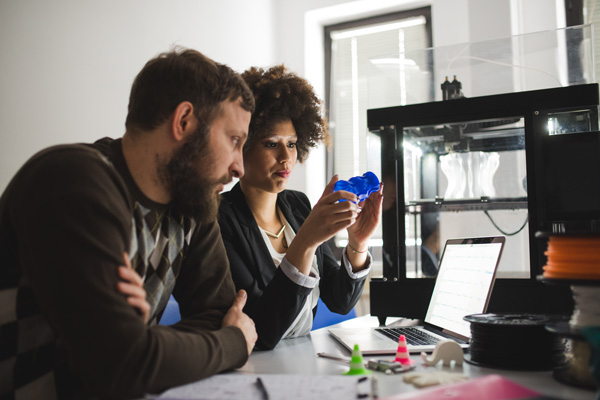
Get It Right With Prototyping: 5 Steps to Turn your Concept into a Reality
Most people believe that prototyping is only meant for the early stages of product development, however, this is not true. Many engineers and inventors use prototyping to test and perfect their concepts. Without prototyping, you might end up incurring more costs in the long run by spending more on larger manufacturing runs or having a less than optimal product design. Prototyping helps you avoid these mistakes. Here are five steps to help turn your concept into reality.
1. Product Concept
The first step in any production process is conceptualization. Through observing daily life, or studying the market, one might notice a failing of currently used products and come up with a concept solution. In this stage, the aim is to convey your idea. Therefore, prototypes will range from quick 3D printed prototypes to more professional-looking models.
2. Concept Proof
During the initial design stage, the main goal is to demonstrate that the design works as intended without necessarily matching the finished product’s aesthetics. To help save on costs, the prototype should employ the use of off-the-shelf components. For example, selective laser sintering (SLS)uses durable white nylon commonly paired with metal inserts.
3. Industrial Design
The next step is to focus on the materials being used for the final product. Once you’ve gotten to this step, your concept’s functionality should be proofed and ready for production. The parts needed for production must be engineered since they must be tapered to allow easy removal from the steel tool. You can also design the mold that will be used for injection mold manufacturing. Molds are commonly made from hardened steel, pre-hardened steel, aluminum or beryllium-copper alloy. Each material is made to suit how the mold will be used. The number of parts, as well as their material, will help you decide what the mold should be made of.
4. Functional Prototype
Coming up with a functional prototype goes a long way in optimizing the product for volume manufacturing. The goal is testing. The process involves subjecting the prototype to different test requirements; functional, strength, safety, et cetera. It is usually a back and forth process with the model adjusted after the result of each testing, and the process continued until the prototype passes every test.
5. Manufacturing Process
The injection molding process begins with a thermoplastic material in granular form being fed into a heating barrel. The plastic is heated until it reaches a predetermined temperature. It is then driven into the mold by a large screw. The screw remains in place after the mold is filled, applying pressure during the predetermined cooling time. Next, the screw is withdrawn, the mold is opened, and the part is ejected.
Prototyping ensures a final product that meets all objectives intended by your original concept. If you’re looking for a plastic injection molder near you, check out Valencia Plastics or visit our blog to learn more about the injection molding and blow molding processes.
0 Comments
Leave a reply
You must be logged in to post a comment.
